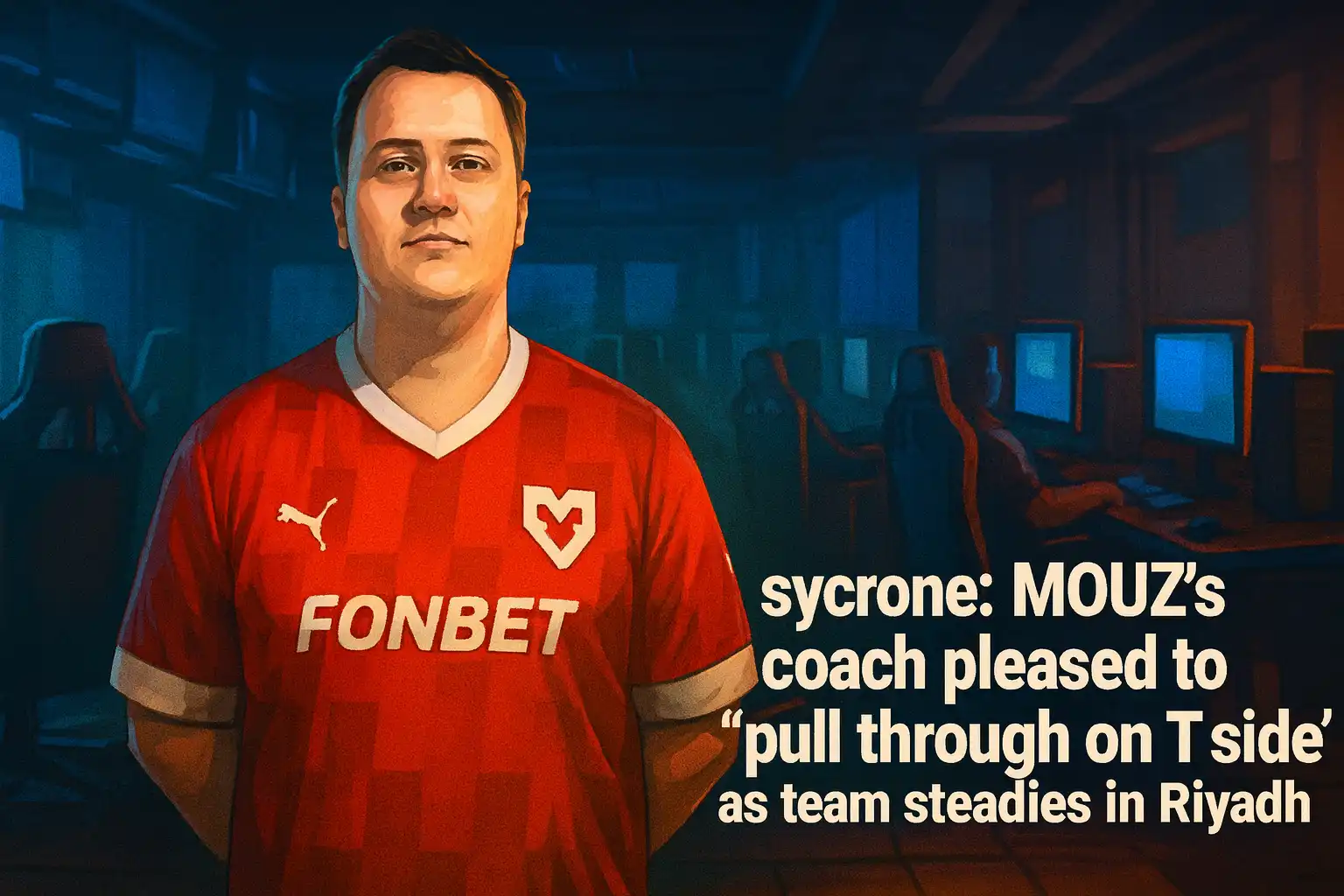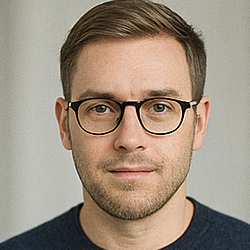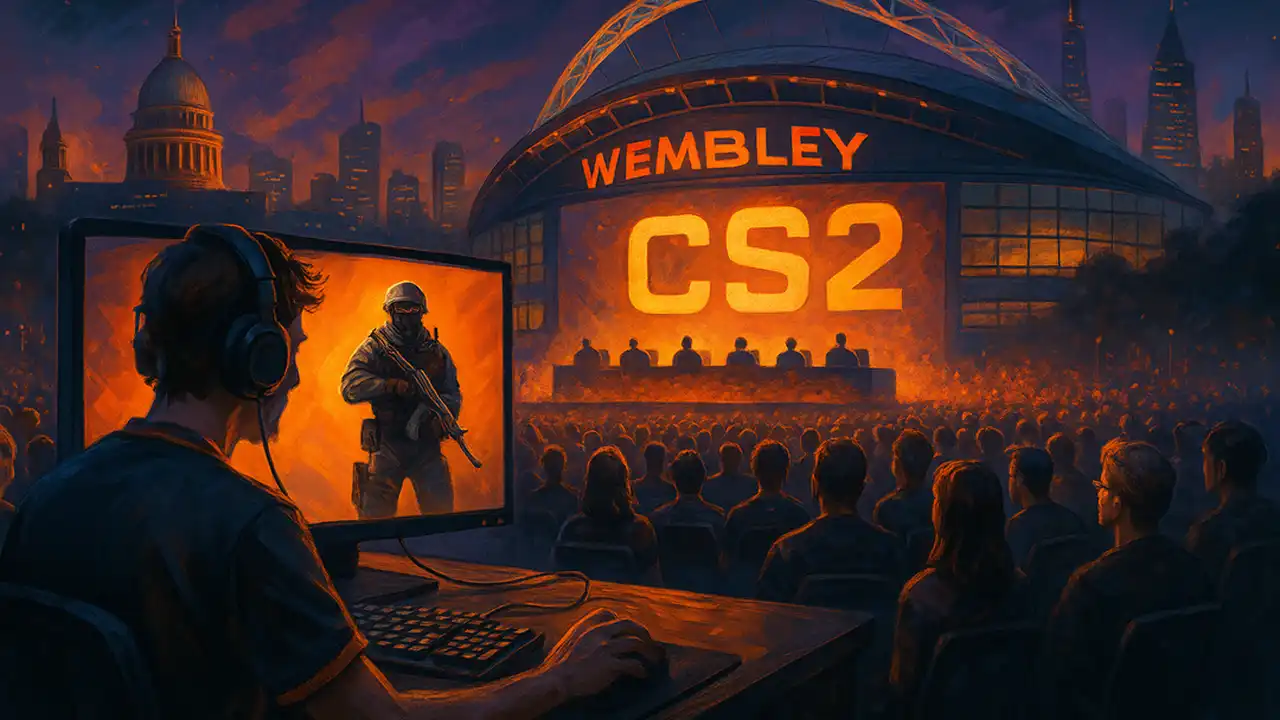sycrone: MOUZ’s coach pleased to “pull through on T side” as team steadies in Riyadh

sycrone: MOUZ’s coach pleased to “pull through on T side” as team steadies in Riyadh
MOUZ coach Dennis “sycrone” Nielsen struck a relieved tone after his team ground out key attacking halves at the Esports World Cup, calling it “good to manage to pull through on T side.” It’s a simple line, but one that lands with weight given how often T-side fragility has stalked this roster through 2025.
The comment came amid MOUZ’s EWC campaign in Riyadh, an event that has already served up stumbles for heavy hitters and redemption arcs for others. MOUZ themselves survived a stern test in the playoff race and even sent Virtus.pro home in a three-map affair—another data point that their floor has risen and their mid-series problem-solving is tightening.
Why this T-side matters
If you’ve followed MOUZ this season, you’ll know why a coach would single out the T half. The team’s offensive rounds have been flagged repeatedly in 2025, sometimes by MOUZ players themselves. Earlier this month, Brollan—the lineup’s in-server leader—said it was “really nice that we could win a T side for once,” a candid admission that the side of the map where information is scarce and utility must be perfect has been a pain point. The improvement in Riyadh suggests the hours put into re-sequencing defaults and mid-round calling are beginning to translate on stage.
That MOUZ are talking about sturdier T halves at all is meaningful in the context of their broader rebuild. The team underwent leadership changes in 2025, with sycrone publicly stressing the deliberation behind those calls (“a decision like this is never sudden”) and, later, the mental grind of bouncing back after tough finals. Those themes—patience, process, repetition—are the connective tissue between a shaky T-side spring and a more assertive summer.
A coach’s fingerprints
Nielsen’s MOUZ have tended to evolve in recognizable ways: clear structure from spawn, a heavy emphasis on conditioning early rounds, and role clarity that avoids over-complication when the mid-round gets scrappy. You can hear echoes of that approach in the public comments around the squad. Brollan’s transition into leadership has been framed as a long-term project—“very eager to learn,” as sycrone has said—and the group’s practice environment has been organized around that reality. That intentional scaffolding is usually what allows a team to add late-round layers without losing identity.
There’s also been a recurring thread in sycrone’s media spots about competitive fairness and recovery windows at events—he has previously argued that rest-day distribution can create “unfair” edges. While that critique was directed at a BLAST stop earlier in the year, the underlying point is timeless: if you want your T-side to hold under pressure, you need fresh legs and clear minds. MOUZ looked closer to that standard in Riyadh.
Context from the wider field
The EWC playoff picture has been volatile. On the same news cycle that carried sycrone’s T-side remark, the site’s front page chronicled shock exits and momentum swings: Astralis and FaZe cracked, big names were bundled out earlier than expected, and MOUZ’s own bracket win over Virtus.pro added to the chaos narrative. In such an environment, composure on attack—where crowd noise and pressure distort comms—often separates teams that merely survive from those that impose.
It’s telling that other leaders at the tournament have voiced similarly process-centric messages. NAVI’s AleksiB called their situation “gut-wrenching” after elimination and spoke about plotting a path forward; device, after Astralis’s early exit, owned that he “could have made the difference” in close rounds. That chorus underscores how thin the margins are: a lost 1v1 here, a mis-timed exec there. MOUZ’s ability to string together cleaner T halves, then, isn’t just cosmetic—it’s the difference between 1-1 halves and 8-4 platforms.
What changed in-server?
While the team kept specifics behind the curtain, the on-stage product hinted at a few staples:
-
Earlier space taking into late-round anchors. You saw more rounds where MOUZ established a forward lurk or deep staging area before committing utility, which simplified the final 20 seconds.
-
Utility discipline around key choke points. Trading molotovs for smoke advantages in connector-style areas, rather than dumping full belts on contact, gave Brollan better call trees.
-
Staggered trading patterns. Fewer “all-in” floods, more two-wave hits that punish the first rotator instead of the anchor.
Those are exactly the micro-tweaks that turn a 40% T-half into a 55% one over a small sample. They also map onto sycrone’s historic preferences: process over heroics, role fidelity, and repeatable round-building.
The road ahead
MOUZ will need that repeatability as the calendar accelerates. The EWC bracket punishes hesitation, and the fall circuit rapidly funnels into StarSeries and tier-one arenas where the book on your attacks thickens by the day. The coaching rhetoric coming out of the camp—methodical, unglamorous, focused on sustainable edges—matches what the eye test is beginning to show in Riyadh.
No one inside MOUZ is suggesting the T-side issue is solved forever; in 2025, every team with a deep demo pool will force you to reinvent two or three staple rounds per map every few weeks. But the tone has changed from apology to affirmation. When a coach whose messaging has long been about grind and growth says “it feels good,” it usually means the practice room and the stage finally look like the same team.
At a glance
-
Key quote: “It feels good to manage to pull through on T side.” — sycrone.
-
Form note: Brollan previously highlighted T-side struggles; EWC performances suggest progress.
-
Result marker: MOUZ ousted Virtus.pro in a three-map series at EWC.
-
Big-picture context: A turbulent EWC has seen elite teams exit early, heightening the value of stable attacking halves.



